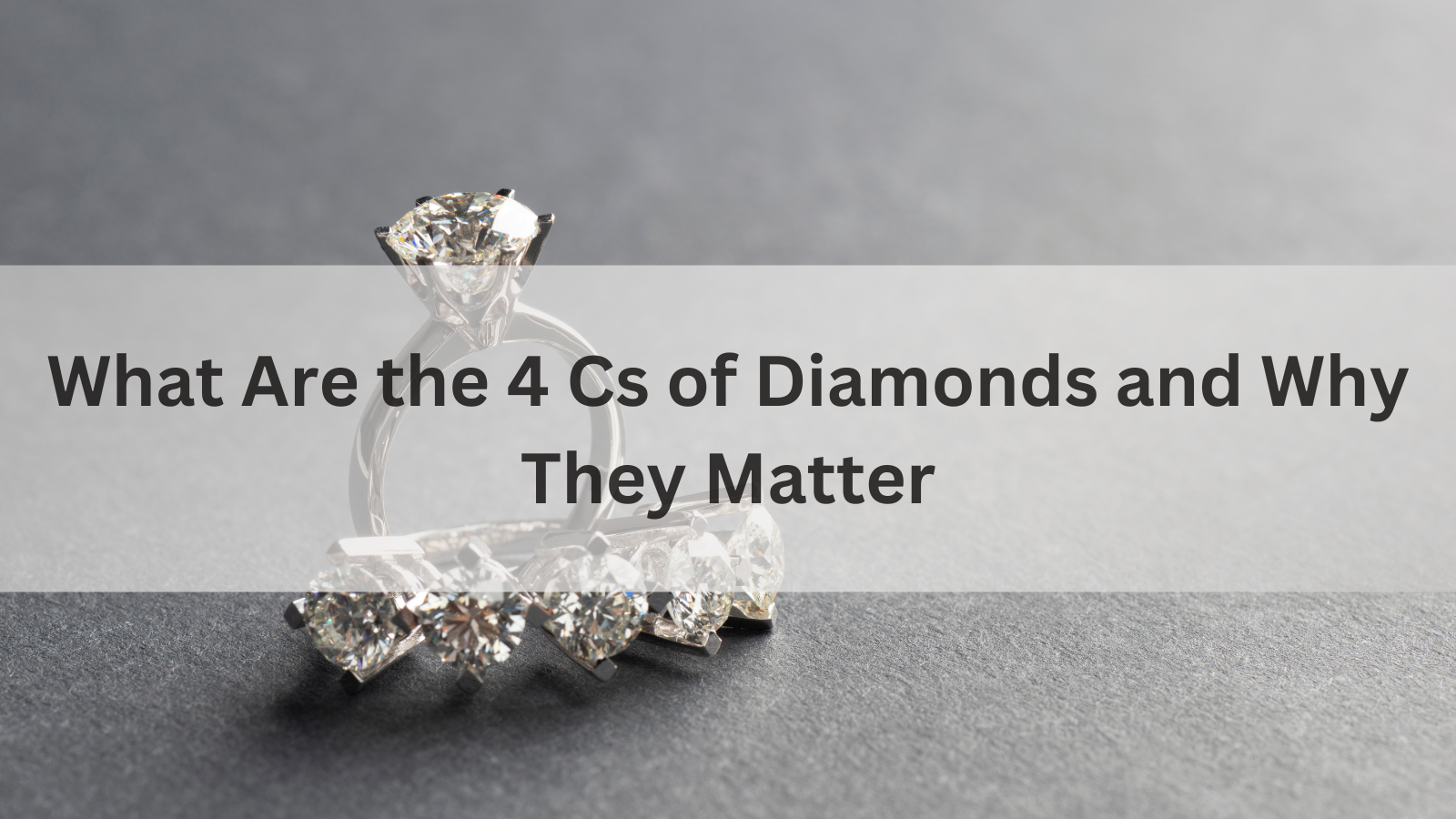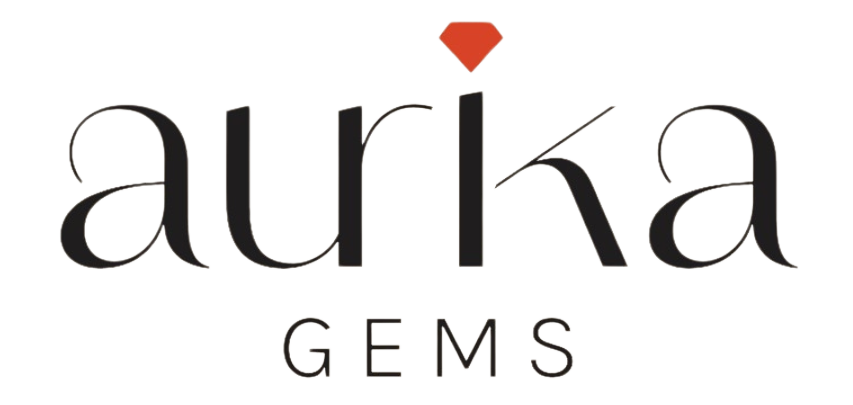
What Are the 4 Cs of Diamonds and Why They Matter
Diamonds have long been celebrated for their beauty, rarity, and enduring value. Whether you're choosing an engagement ring, a piece of fine jewelry, or simply investing in a diamond, understanding the 4 Cs—Cut, Color, Clarity, and Carat Weight—is essential. These four characteristics determine a diamond’s quality and value, and mastering them will help you make an informed purchase. In this comprehensive guide, we’ll explore each of the 4 Cs in detail and explain why they matter when choosing a diamond.
1. Cut: The Art of Light
1.1 What Is Diamond Cut?
The cut of a diamond refers to how well the diamond has been shaped and faceted. It’s the only aspect of a diamond’s quality that is influenced by human craftsmanship. The precision of the cut affects how light interacts with the diamond, impacting its brilliance and overall sparkle. The cut is not to be confused with the diamond’s shape (e.g., round, princess, oval), which refers to its physical form.
1.2 The Importance of Cut
A well-cut diamond will reflect light through its facets and disperse it brilliantly, creating the sparkle that makes diamonds so desirable. A poorly cut diamond, on the other hand, may appear dull or lifeless even if it has excellent color and clarity.
1.3 Cut Grading
Diamonds are graded on their cut quality based on several factors, including brilliance, fire, and scintillation. The grading scale usually includes:
- Excellent: Exceptional light performance with optimal proportions and symmetry.
- Very Good: High-quality performance with minor deviations from the ideal cut.
- Good: Acceptable performance with noticeable deviations that still provide substantial sparkle.
- Fair: Adequate performance with significant deviations that may affect the diamond’s sparkle.
- Poor: Subpar performance with major deviations impacting the diamond’s brilliance.
1.4 Choosing the Right Cut
When selecting a diamond, consider both the cut grade and the diamond’s shape. Popular cuts include the round brilliant, princess cut, and emerald cut. Each shape has its own set of proportions and characteristics that affect its sparkle and visual appeal.
2. Color: The Subtle Hues
2.1 What Is Diamond Color?
Diamond color refers to the presence of any hues or tints in the diamond. The most valuable diamonds are those with the least color, as they allow more light to pass through and exhibit greater brilliance. The color grading scale measures the absence of color in diamonds, with the most common scale ranging from D (colorless) to Z (light yellow or brown).
2.2 The Importance of Color
Color impacts a diamond's appearance and value. While colorless diamonds are generally the most sought after, some diamonds with subtle tints can also be beautiful and unique. The best way to determine the ideal color for you is to view diamonds in person and compare them side by side.
2.3 Color Grading
The color grading scale is as follows:
- D-F (Colorless): Diamonds in this range are completely colorless and the most desirable.
- G-H (Near Colorless): Diamonds with slight traces of color that are not easily visible to the naked eye.
- I-J (Faint Color): Diamonds with noticeable color that can be detected, especially in larger stones.
- K-Z (Light to Dark Color): Diamonds with significant color that may affect their brilliance and overall appeal.
2.4 Choosing the Right Color
When choosing a diamond color, consider how the diamond will be set in the ring. For instance, diamonds set in yellow gold or rose gold settings may not require the highest color grades, as the metal can complement the diamond’s hue.
3. Clarity: The Perfection of Nature
3.1 What Is Diamond Clarity?
Clarity measures the presence of internal or external imperfections, known as inclusions and blemishes, within the diamond. These natural imperfections can affect the diamond’s brilliance and overall value. Clarity grading assesses how visible these imperfections are under magnification.
3.2 The Importance of Clarity
A diamond’s clarity influences its visual appeal. While many inclusions and blemishes are microscopic and not visible to the naked eye, they can impact the diamond’s value. Higher clarity grades are generally more valuable, but some inclusions can add unique character to a diamond.
3.3 Clarity Grading
The clarity grading scale includes:
- Flawless (FL): No inclusions or blemishes visible under 10x magnification.
- Internally Flawless (IF): No inclusions visible under 10x magnification, but minor surface blemishes may be present.
- Very Slightly Included (VVS1, VVS2): Inclusions are very difficult to see under 10x magnification.
- Slightly Included (SI1, SI2): Inclusions are noticeable under 10x magnification and may be visible to the naked eye.
- Included (I1, I2, I3): Inclusions are visible to the naked eye and may affect the diamond’s brilliance.
3.4 Choosing the Right Clarity
For most buyers, a diamond with an SI1 or higher clarity grade offers an excellent balance of value and visual appeal. It’s important to view the diamond in person to ensure that any inclusions do not significantly detract from its overall appearance.
4. Carat Weight: The Measure of Size
4.1 What Is Carat Weight?
Carat weight measures the size of a diamond. One carat is equal to 200 milligrams. While carat weight is a key factor in determining a diamond’s value, it’s important to remember that carat weight alone does not determine a diamond’s overall quality.
4.2 The Importance of Carat Weight
Carat weight impacts the diamond’s size and perceived value. Larger diamonds are generally more valuable, but the price can vary significantly based on the other 3 Cs (Cut, Color, Clarity). A well-cut smaller diamond can appear more brilliant than a larger diamond with poor cut quality.
4.3 Carat Weight and Pricing
Diamonds are priced per carat, with prices increasing exponentially as carat weight increases. It’s important to balance carat weight with the other 3 Cs to find a diamond that offers the best combination of size and quality within your budget.
4.4 Choosing the Right Carat Weight
Consider the recipient’s preferences and the overall design of the ring when choosing carat weight. Remember that a diamond’s overall appearance is influenced by the combination of cut, color, and clarity, not just its size.
Putting It All Together: How to Choose the Perfect Diamond
Choosing the perfect diamond involves balancing the 4 Cs to match your preferences and budget. Here are some tips to help you make an informed decision:
5.1 Determine Your Priorities
Decide which of the 4 Cs is most important to you. If you value sparkle, prioritize cut. If size is your main concern, focus on carat weight while ensuring the other Cs are acceptable.
5.2 Set a Budget
Establish a budget that reflects your priorities and stick to it. Remember that diamonds are available in a wide range of qualities and prices, so you can find a beautiful stone within your budget by balancing the 4 Cs.
5.3 View Diamonds in Person
Whenever possible, view diamonds in person to assess their appearance and quality. This will help you understand how the 4 Cs affect the diamond’s overall look and ensure you make a choice you’re happy with.
5.4 Seek Expert Advice
Consult with a reputable jeweler or gemologist who can provide guidance and help you understand the nuances of the 4 Cs. Their expertise can be invaluable in making an informed decision.
5.5 Consider Certification
Choose a diamond that comes with a grading report from a reputable gemological laboratory, such as the Gemological Institute of America (GIA) or the International Gemological Institute (IGI). This certification provides an objective assessment of the diamond’s quality and ensures that you’re getting what you pay for.
Read More:
- Introduction to Engagement Rings
- Types of Engagement Rings
- Choosing the Right Metal
- Understanding Diamond Shapes and Cuts
- Custom vs. Ready-Made Engagement Rings
- How to Determine Your Ring Size
- Setting a Budget
- Ethical and Sustainable Options
- How to Care for Your Engagement Ring
Conclusion
Understanding the 4 Cs of diamonds—Cut, Color, Clarity, and Carat Weight—is essential for making an informed purchase. Each characteristic plays a crucial role in determining a diamond’s beauty, value, and overall appeal. By balancing these factors and considering your personal preferences and budget, you can find a diamond that perfectly reflects your style and sentiment.
Whether you're choosing an engagement ring, a special gift, or a cherished piece of jewelry, mastering the 4 Cs will ensure that you make a decision you'll love for years to come. For more detailed information on diamonds and jewelry, explore our related blog posts and resources.


